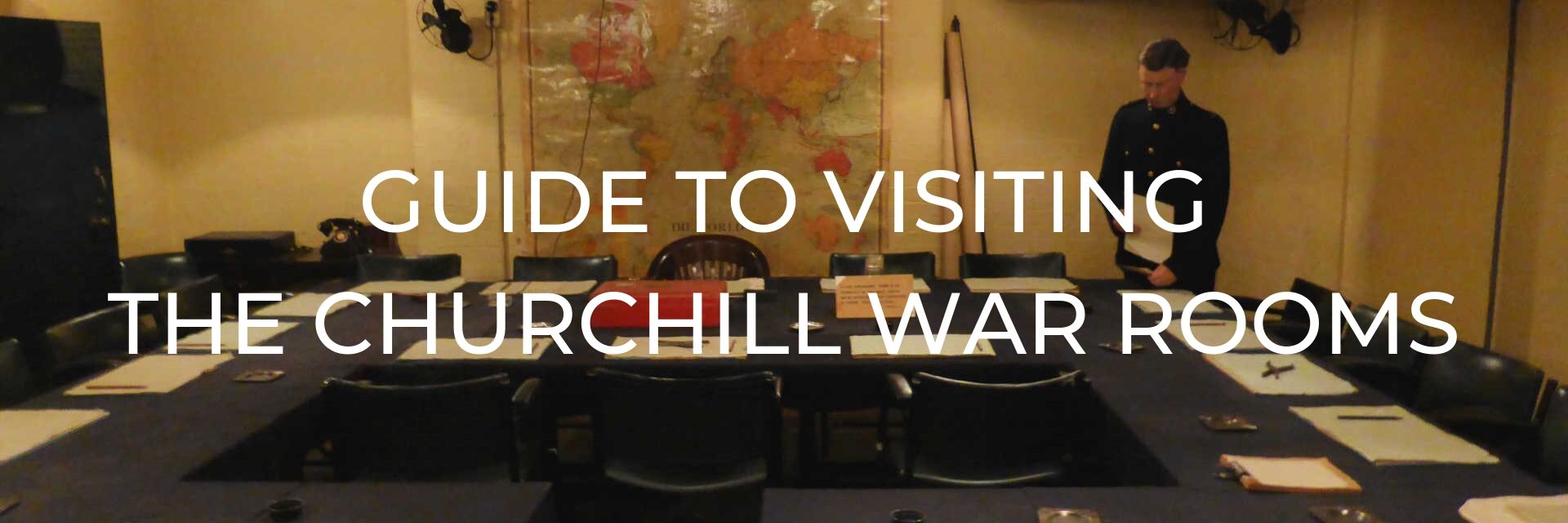
The Churchill War Rooms are where Churchill and the British High Command operated from during World War II. Right in the heart of Whitehall, unbeknownst to the Nazis, was the secret bunker that was making strategies and plans for the defence of the UK. Now part of the Imperial War Museum, a tour allows you to see into the heart of the bunker, how it operated and to walk in Churchill’s footsteps.
Want to save this for later? Click the Pinterest button on the left for a pinnable image!
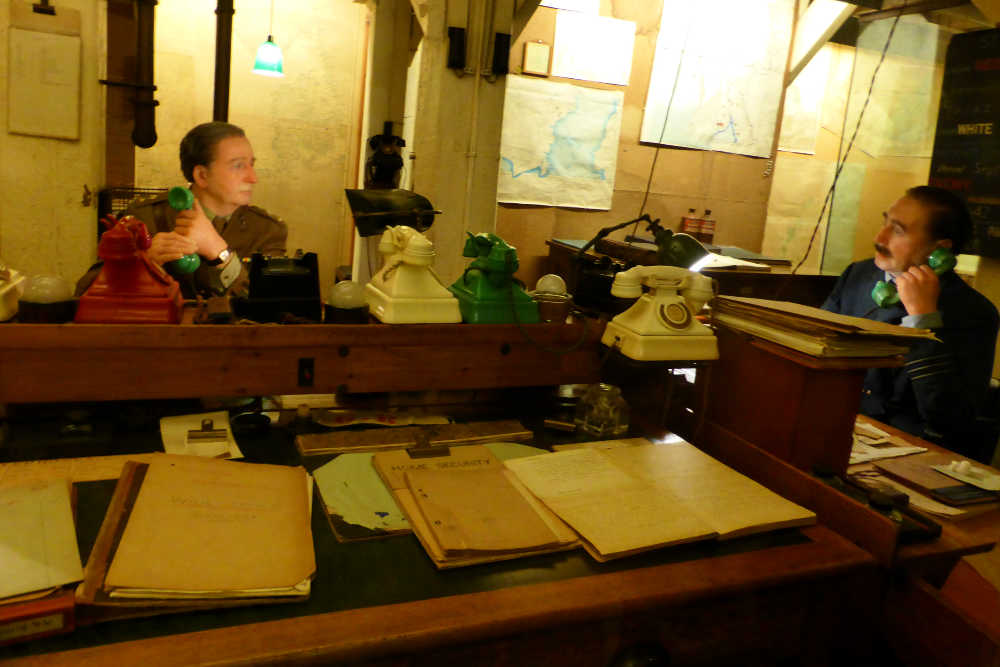
Known as the Cabinet War Rooms, this secret underground complex beneath the treasury building in London’s Whitehall was constructed in the basement in 1938. It started operations just a week before war was declared and remained in operation for the whole of World War II. Operations ceased after the Japanese surrender in August 1945.
Manned around the clock, it became the hub for wartime operations and its importance grew when Sir Winston Churchill, Britain’s wartime prime minister, began holding his cabinet meetings there. After the war ended, the rooms were abandoned and could only be viewed publically by appointment. The number of requests eventually became so high that the Imperial War Museum took over the running of the site and turned into a publically accessible museum.
HIGHLIGHTS OF THE CHURCHILL WAR ROOMS
The entrance to the Cabinet War Rooms is opposite St James’s Park on Horseguards Road, not far from the junction with Birdcage Walk and Great George Street. A fairly ordinary looking canopy “hides” the entrance to what used to be a top-secret bunker. The tour is self-guided and takes you through the bunker at your own pace using the audio guide that is included in your admission price.
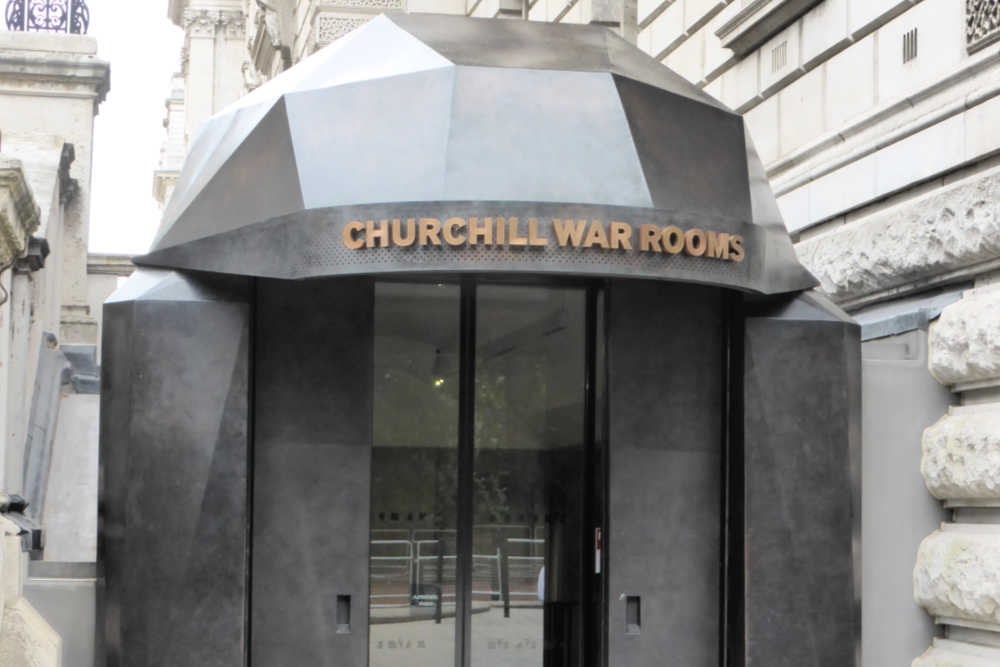
THE TOUR
The self-guided audio will take you through the Churchill War Rooms in an orderly fashion. The route is quite linear, so you will just move from point to point, listening to the guide at various places. At the start of the tour, you’ll see a bust of Churchill and some facts about the Blitz and its devastating impact on London – some of these are projected onto a bomb that dangles menacingly over your head!
You’ll then visit the war rooms themselves before entering a large room containing personal items of Winston Churchill and other items. Smaller rooms for the personnel manning the bunker are next on the tour before it finishes with a view of the BBC broadcasting room and the rooms used to plan and track the war as it progressed.
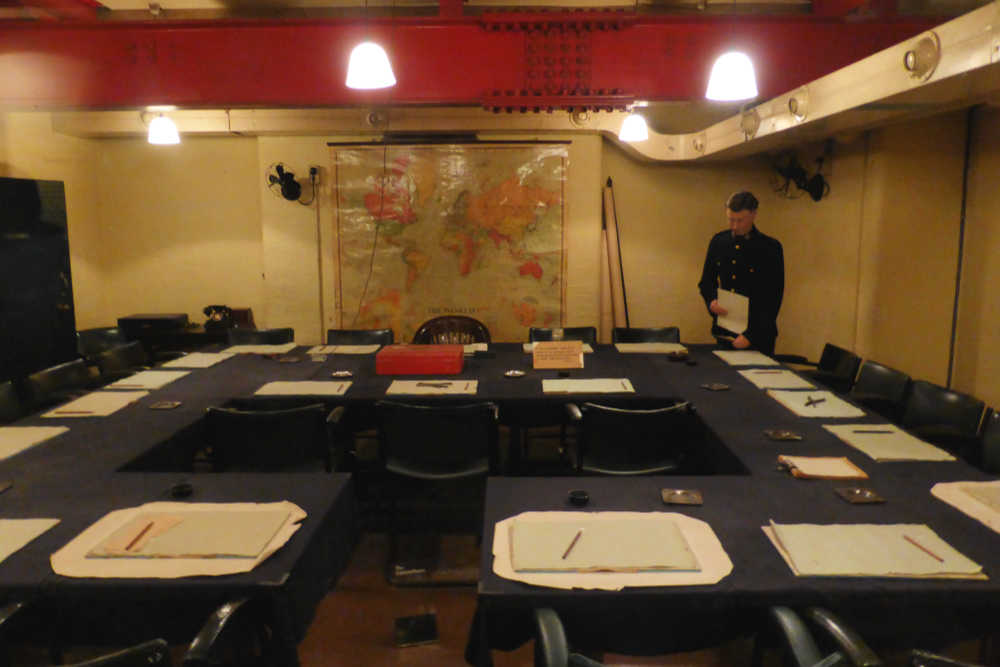
THE CABINET ROOM AND CHURCHILL’S OFFICE
The first key room of the Churchill War Rooms is the Cabinet Room. About two-dozen people would have been in this room for meetings to discuss recent events and make high-level plans for how to proceed as the war progressed. The layout of the tables shows how the three chiefs of staff of the armed forces were effectively sitting in the centre of the tables with their backs to some other attendees. Winston Churchill’s seat is clear from its different design and the governmental red box that is displayed in front of it. A large world map adorns the wall with a wax figure seeming to prepare the room for its next meeting by setting out the pens and blotters ready for use.
The offices of the prime minister are the next stop where you can see where Winston Churchill would have worked while in the War Rooms. Here also is the transatlantic telephone room where a special telephone provided a secure line between Winston Church and Franklin Roosevelt. A wax figure of Winston is shown on the telephone, deep in conversation about the war.
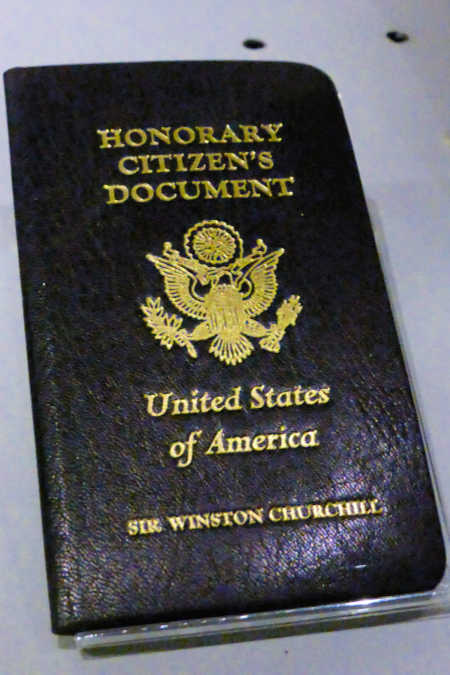
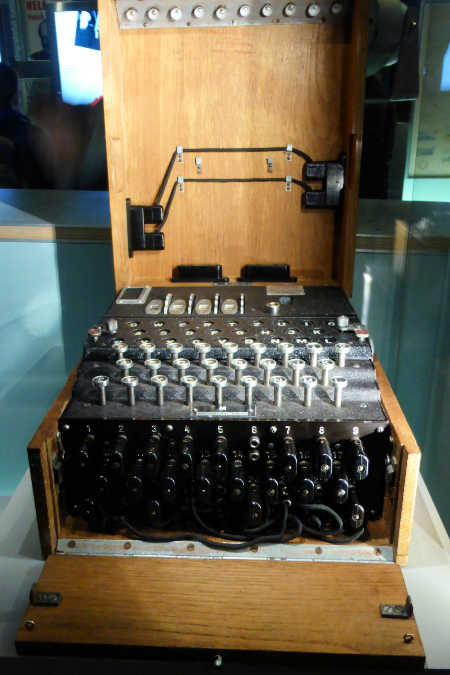
CHURCHILL’S EFFECTS
After Churchill’s office, you enter a larger room which displays many items associated with or owned by Winston Churchill. His US passport after he received honorary citizenship (only the second person ever to do so), the flag that adorned his coffin at his state funeral which is a supreme honour for a “commoner”, and the medals he was awarded during his military career.
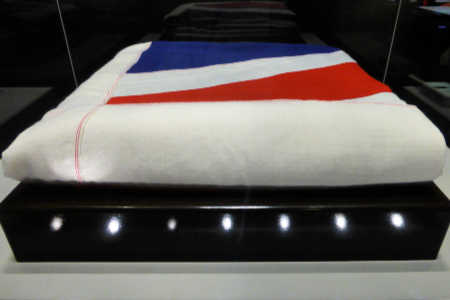
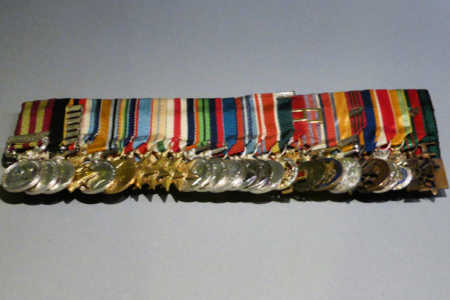
Assorted other items are also displayed here including an actual front door from 10 Downing Street and an Enigma Machine that the code-breakers at Bletchley Park so expertly cracked, shortening the war by years. On a more light-hearted note, there is a display of Toby jugs of Churchill’s Head as well as many toy soldiers.
It is just outside this room that you can see through a hole in the ceiling to a piece of the protection that was installed to protect the bunker once the Blitz began to hit London. However, even with increased protection, the bunker was far from bombproof, being only twelve-feet underground, a direct hit would have almost certainly been catastrophic.
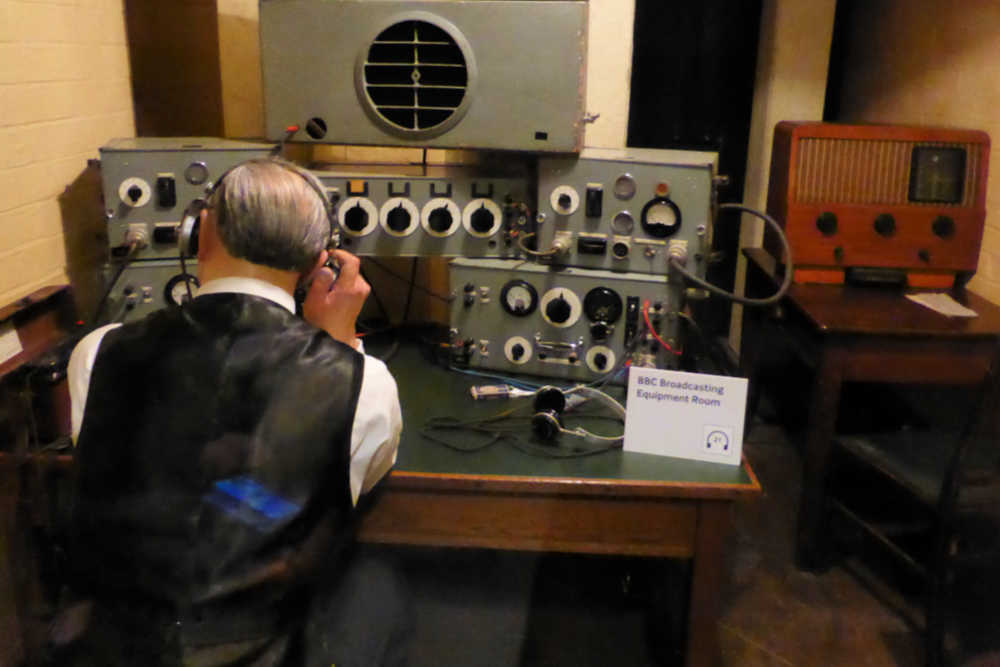
PERSONNEL ROOMS AND THE BBC BROADCASTING ROOM
The tour continues with views into several rooms, from places for Churchill’s detectives to sleep to dining rooms and kitchens. These were all essential rooms to keep the War Rooms running as everyone pulled together to ensure a successful outcome to the conflict. Many of the rooms are set-up to show how they would have looked when they were being used which helps provide an insight into how the place that was so instrumental in the war effort would have operated.
The BBC Broadcasting Room allowed Winston Churchill to address the nation directly from the War Rooms. A radio operator is shown using the 1940s vintage equipment, however, only four such broadcasts were ever made from the bunker
The final rooms show where much planning and administration would have been carried out. It is here that the many military and other personnel would have worked taking in information, processing it and deciding what actions to take. Maps cover the walls, including some still covered in small pins showing the positions of fronts in the war as the Allies pushed through occupied Europe towards Germany near the end of the war.
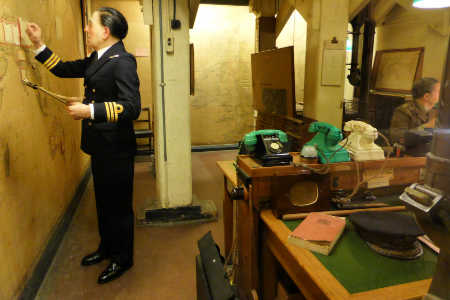
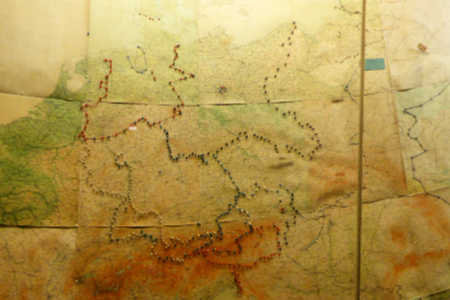
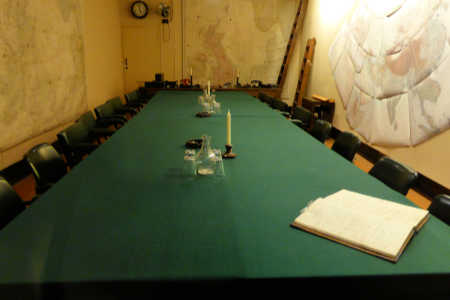
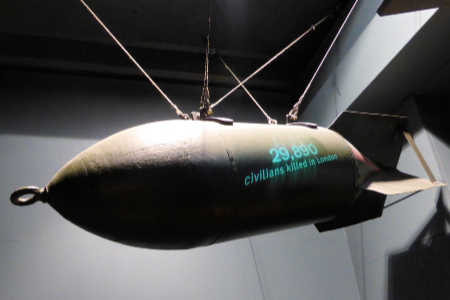
PLAN YOUR VISIT TO THE CHURCHILL WAR ROOMS
Information last updated September 2019
HOW TO GET THERE
The Churchill War Rooms can be found at Clive Steps, King Charles St, London SW1A 2AQ.
The entrance is a quite non-descript dark canopy and doors which are not the easiest to spot. If you come along King Charles St. and then down Clive Steps, you should do an immediate 180° turn to the left to see the entrance. If you are coming along Horse Guards Road, keep an eye out on the opposite side of the street to St. James’s Park for the entrance.
The nearest tube station is St James’s Park (District and Circle Lines) which is just six-minutes walk.
Parking is available less than ten minutes walk away at Q-Park Trafalgar.
HELPFUL LINKS:
- If you need an app that will navigate you around whether walking, driving or using public transport and even works offline then click for a guide about how to use Here WeGo.
- The Tube Map/London Underground App (Android and Apple) is very useful for getting around London. It's free, has a route planner, and works offline.
- Transport for London website's "Plan Your Journey" tool will give you results for trip time on the Tube, bus, or walking. Note the walking time as sometimes it is the quickest, easiest, option!
OPENING HOURS
Opening hours are 0930-1800 every day except for the 24th to 26th December. From the 1st July to 31st August the closing time is extended to 1900. Last admission is one hour before closing.
As the entire exhibition is indoors, any time of year is a good time to visit and it could be the perfect place to visit on a rainy or cold day.
HOW TO BUY TICKETS & SAVE MONEY ON ADMISSION
Basic admission prices are £22 for adults, £11 for children 5-15 years, £17.60 for over 60s, students and disabled visitors. One carer per disabled visitor can visit for free.
The Churchill War Rooms are included in the London Pass which can offer savings depending on what else you are doing whilst you are in London. If you are travelling by train on the National Rail you may also be eligible for great savings with the 2 for 1 London offer by Days Out Guide. This offer is not available all the time but it is well worth a quick look on their website to see if it’s available for when you’d like to visit.
ACCESSIBILITY
The Churchill War Rooms offer step-free access throughout.
For full accessibility details please visit the Churchill War Rooms Accessibility page.
ARE THE CHURCHILL WAR ROOMS WORTH THE VISIT?
We found our visit to the Churchill War Rooms to be both interesting and informative. To see the actual rooms where Britain planned its military strategy during World War II was fascinating and the staging of the rooms, as they would have been back then, is very well done.
See what others think of this attraction on Trip Advisor.
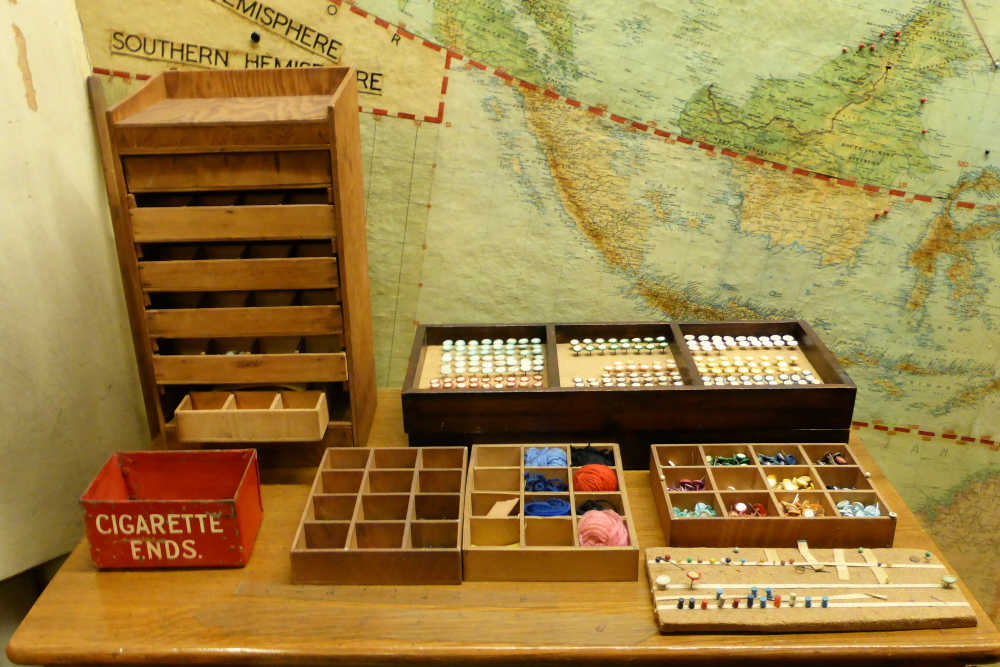
ADD TO YOUR ITINERARY
“When a man is tired of London, he is tired of life” said Samuel Johnson, so it’s no surprise that there are a plethora of things to do in the UK’s capital city. Here are a few choice selections to whet your appetite.
IN THE AREA
- Visit the final resting place of kings, queens, writers, and scientists, see the tomb of the unknown warrior and the place where many royals have got married all at Westminster Abbey.
- Enjoy the neo-Gothic architecture of the Palace of Westminster and learn about the UK’s parliamentary system of government.
- Take a ride on the London Eye and take in the breathtaking views as the Eye takes you 130m above London.
- See the magnificent Buckingham Palace which is the London home of the Queen. Maybe get there for the changing of the guard or, in summer months, go inside and explore the opulence.
RELATED ATTRACTIONS IN AND AROUND LONDON
- Continue learning about World War II history, as well as other conflicts through history, at the Imperial War Museum.
- Explore HMS Belfast, a real warship that served in World War II and is one of only three remaining warships that served on D-Day in 1944.
- North of London you can find IWM Duxford, a branch of the Imperial War Museum which houses nearly 200 aircraft including warplanes and a development Concorde.
- Peer through the gates to see a glimpse down Downing Street to Number 10, the home of the current Prime Minister of the UK and the former home of Winston Churchill.
Want to save this for later? Click the Pinterest button on the left for a pinnable image!
RESOURCES | PLAN YOUR TRIP TO LONDON
To book flights, rental cars, accommodations, and activities for your trip, please check out our recommended travel providers, favourite apps and websites.
These are a few tours that relate to the Churchill War Rooms that we would recommend for your trip to London.
Some of the links in the post above are affiliate links. This means if you click on the link and purchase the item, we will receive an affiliate commission but this does not affect the price to you. Please read our full disclosure policy here.
